
Porsche Panamera E-Hybrid Review

Introduction
After more than ten years on sale, the Porsche Panamera is now in the second phase of its second iteration. It’s not strayed far from the principles of a four-door Porsche that the 989 prototypes previewed back in the late 1980s; it’s still a sleek, fast, luxurious and now very attractive machine set firmly apart from the German luxo-barge fare.
As its all-electric Taycan sibling arrives to sit alongside, almost as a car that previews its future, the Panamera needs to evolve. But, while cars like the Aston Martin Rapide and Maserati Quattroporte have either gone out of production or disappeared into irrelevance, Porsche certainly hasn’t stood still.
Review Sections
Select's rating score* - 4.2 / 5
At a Glance
Happily, the Panamera has evolved, adopting plug-in hybrid electric power. It was once the case that a big luxurious front-engined Porsche felt a bit lost without a powerful V8 engine. Today’s plug-in hybrid Panamera, despite taking a more ecological path to power, will still leave all its heavy-drinking forbearers in its dust, all while looking like a winner in a beauty contest. It’s really a sharp-suited four-door super GT.
Porsche being Porsche, it’s also offering a boosted version, turning the 4 E-Hybrid into a 4S or even Turbo S E-Hybrid. It’s not boosted the electric side of the equation, but simply added larger and more powerful petrol engines at the front.
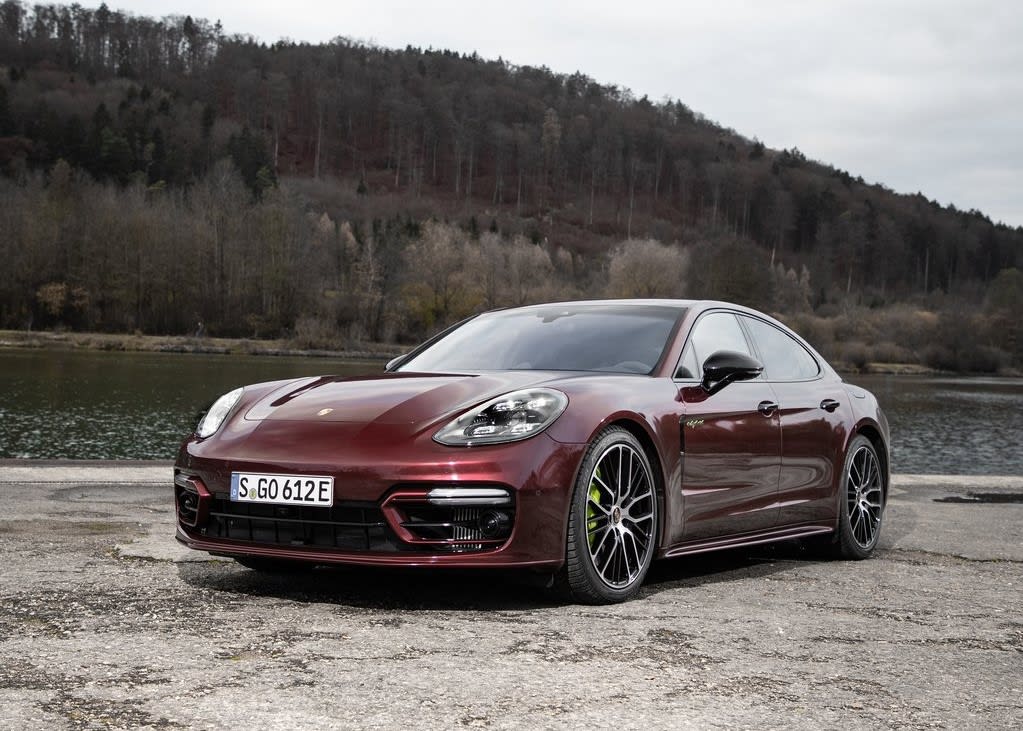
It’s not forgotten the luxuries that those driving cars of this level expect, so it’s comfortable, practical and luxurious, but a list price of more than £140,000 for the top model results in seriously high leasing payments.
It’s possible to save roughly 50% by opting for a lower specification model, but is that a false economy? Is the Panamera of today a car to fit your life? Is it the jack of all trades? Is it still relevant? Porsche hopes to answer yes to each of those questions.
Key Features
The talking point with the Panamera E-Hybrid will always be its green credentials. While it’s no eco-warrior, the switch to part petrol power and part electrical energy is a step too far for some performance car die-hards, but it’s a sign of the times and a precursor to a fossil-free future.
Porsche has plate it rather safe with the E-Hybrid system, using a setup that’s conventional but well-proven. The engine at the front does most of the heavy lifting on longer journeys and when performance is required, while an electric motor sits at the back, under the boot floor, and powers the rear wheels when demands are lighter.
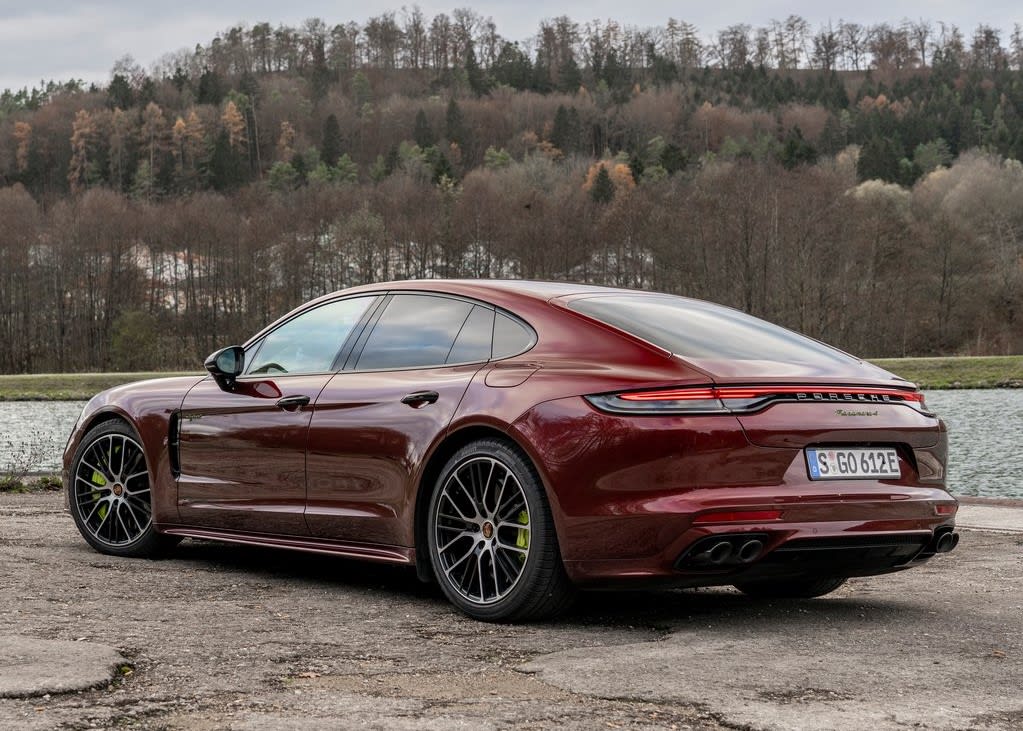
Different driving modes allow you to tweak which part of the system works harder - sport mode, for example, draws as much power from both sources as it can, while eco favours the electric motor.
The result is a little Jekyll and Hyde. Under normal circumstances, the gentle Dr Jekyll will move you along, favouring electric power where possible and using the petrol engine where necessary. It’s relaxing and, assuming you can charge up the batteries reasonably frequently, produces very few emissions. If you want more, Mr Hyde turns up and uses all of that eco-friendly power to go as fast as possible, which won’t do much for the environment but, when the engine and motor are working hard together, it’s as quick as any sports car.
Performance & Drive
For a plug-in hybrid, Porsche hasn’t taken the most fuel-efficient option, pairing the electric motor with a choice of either V6 or V8 petrol engines. Of course, this is a Porsche so driving excitement takes precedence over planet-saving, but the plug-in part at least makes the car more efficient.
Opt for the 4 E-Hybrid version as we’ve got here and there’s a total of 462hp available from the 2.9-litre V6 engine and electric motor, which is enough to pull the Panamera to 62mph in 4.4 seconds. If that’s too pedestrian, Porsche will happily supply you with a more powerful 4S (560hp) or the range-topping Turbo S. With 700hp under the bonnet, that offers near-200mph performance.
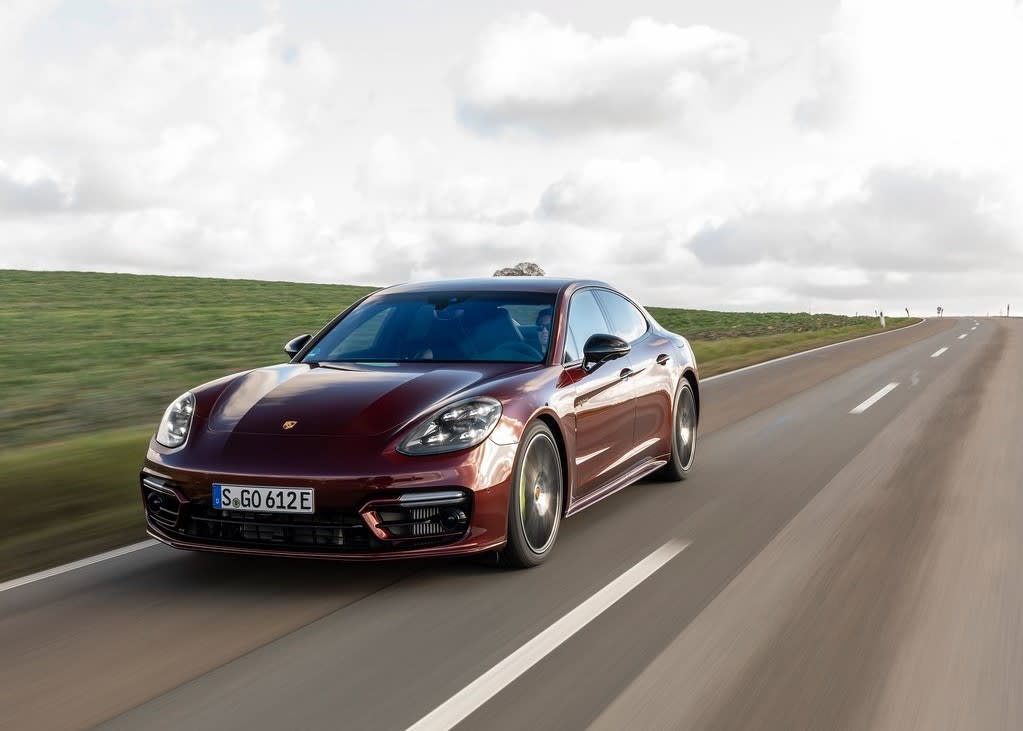
Running in pure electric mode, there’s enough power to keep up with traffic, with the 136hp electric motor happy to propel the Panamera right up to motorway speeds. Press the throttle hard and the petrol engine will kick in, but be gentle and you can cruise around without burning any fossil fuels.
Porsche says it’ll go as far as 35 miles before the battery runs out, but that seems optimistic. Our testing returned about 20 miles, although I don’t doubt you’ll be able to do better with a little more effort.
Find some twistier roads and the four-wheel-drive system adds stability, but the Panamera is so planted you’ll barely need it. Turn-in is sharp, the car almost leaping towards the apex of a curve, with barely any perceptible body roll. The extra weight of the batteries and the electric motor (the car weighs more than 2.2 tonnes) means that the ultimate pace is held back, but you’ll have given up long before the car does.
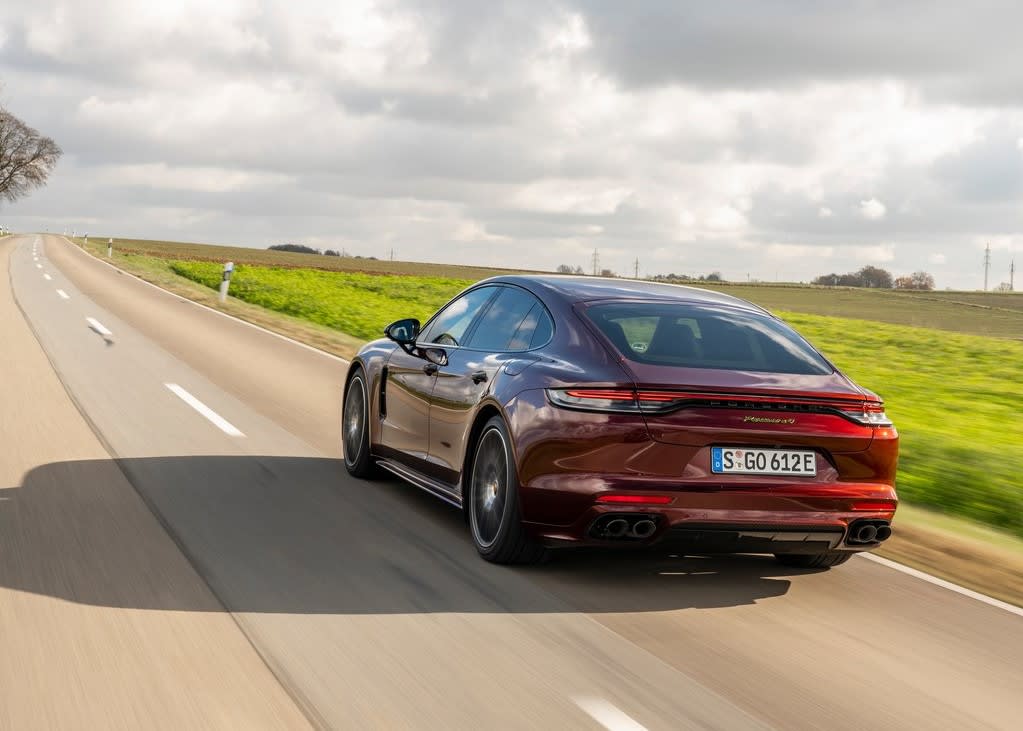
That ever so slight reigning in of its outright handling abilities has a positive impact on the ride quality. It’s firm, but the adaptive air suspension keeps the car well controlled across all surfaces, ensuring a smooth ride for the passengers. Cruise along a motorway and it’s sublime, although sharp edges and potholes in slower urban areas can thump through the cabin noticeably.
Running Costs & Emissions
Given that the battery in this updated E-Hybrid has grown to 17.9kWh, from 14.1kWh, the model now has some commendable electric range under its belt. A WLTP-certified figure of up to 35 miles means that those commuting 20 miles a day or less, who have home charging access, could comfortably run Monday to Friday without so much as firing up the 2.9-litre twin-turbocharged V6 petrol engine.
The official 141.2mpg fuel consumption figure for this 4 E-Hybrid model is neither here nor there in practice - the reality is based more on what kind of driving you’re doing, and how long you’ll be doing it for. You won’t get close if you keep allowing the 330hp V6 to flex its muscles.
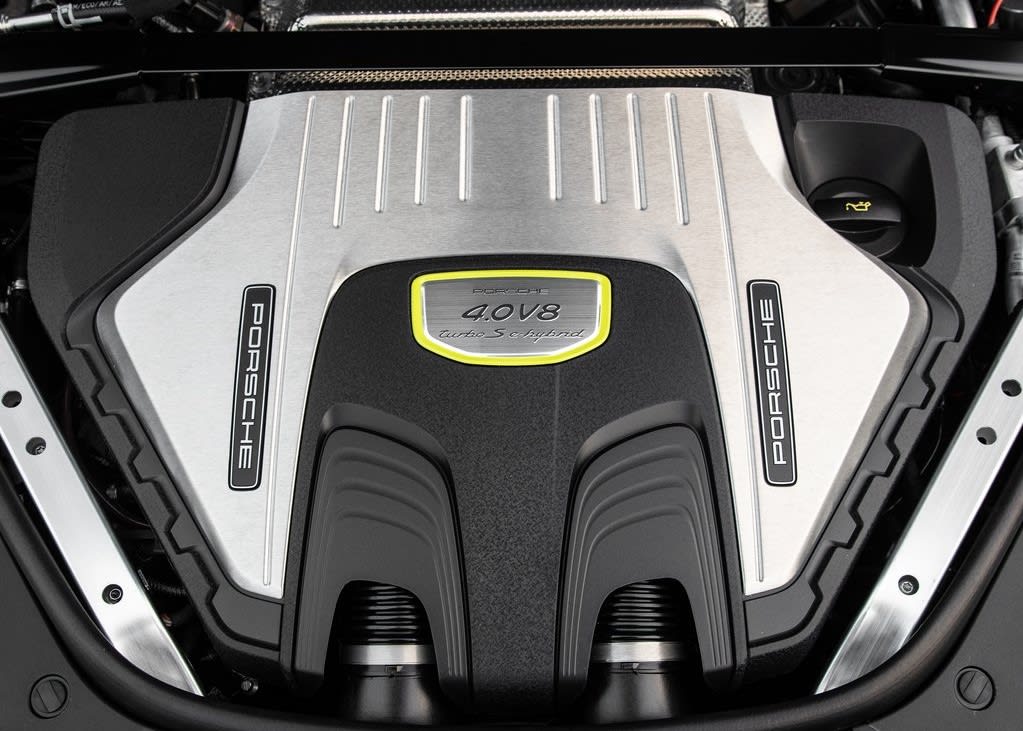
Happily, the official 45g/km average CO2 figure means the Panamera is, compared to many petrol or diesel-powered cars of this type, cheap in terms of BIK tax. Consider the costs alongside its all-electric Taycan sibling, however, and you could be forgiven for considering living a purely EV-only life - ditching partial petrol power as a company car driver drops the 11% rate down to just 1%, cutting your tax bill from roughly £300 a month to around £30.
Unfortunately, for those who suffer within London’s congestion charge zone, the low figure won’t matter very soon - all fuel-burning vehicles will be hit by the charges coming into force in October 2021. Happily, the Panamera still avoids the ULEZ charge and is likely to do so in other cities around the country.
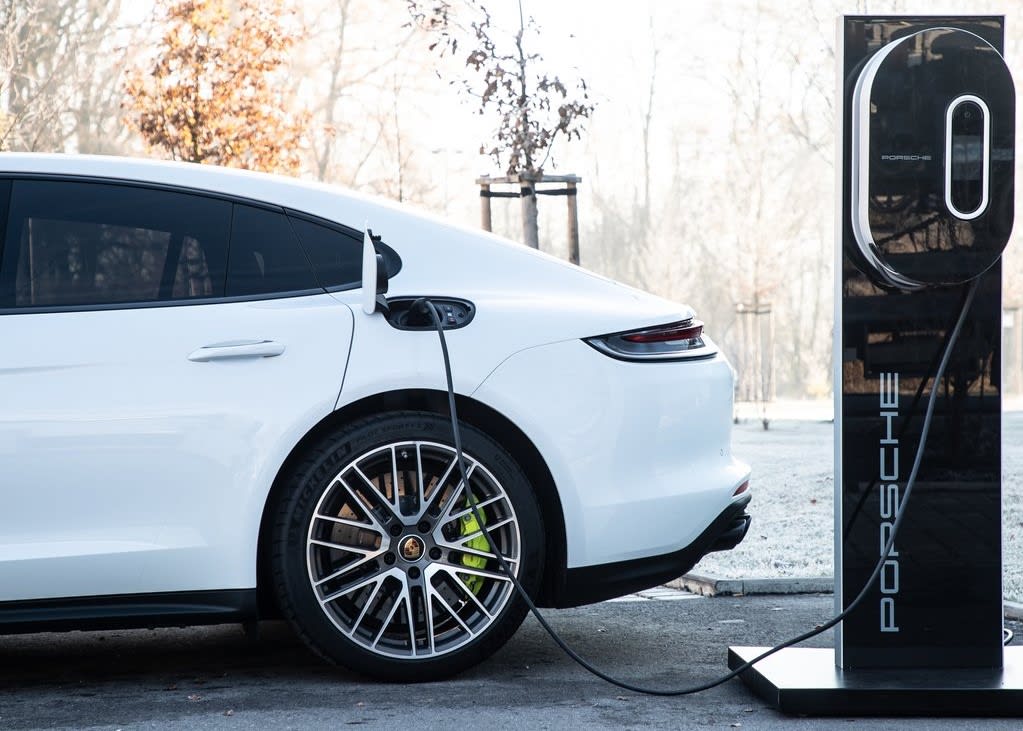
Interior & Technology
Ahead of everything else, a Porsche is a driver’s car, which explains why, when you step inside, everything just feels… right.
The sports seats adjust in seemingly every direction, while the steering wheel and pedals appear to be so perfectly centred ahead of the driver that you wonder how other manufacturers can get this so wrong.
At first glance, there’s a tow of five dials ahead of the driver, a Porsche hallmark. Look more closely and you’ll see most are digital screens, allowing for helpful customisation. The navigation, for example, can sit to the side of the speedometer, making it easier to follow.
Most functions have been moved to a digital screen one way or another. It’s a 12.3-inch touchscreen that dominates the dashboard, housing the infotainment system as well as access to the various systems of the car. It looks good, but it’s not the easiest system to use and requires a little too much looking away from the road to operate. Frustratingly, it also houses the climate control settings, when a dial or set of buttons would be quicker and easier. At least there’s a simple rocker switch to adjust the cabin temperature.
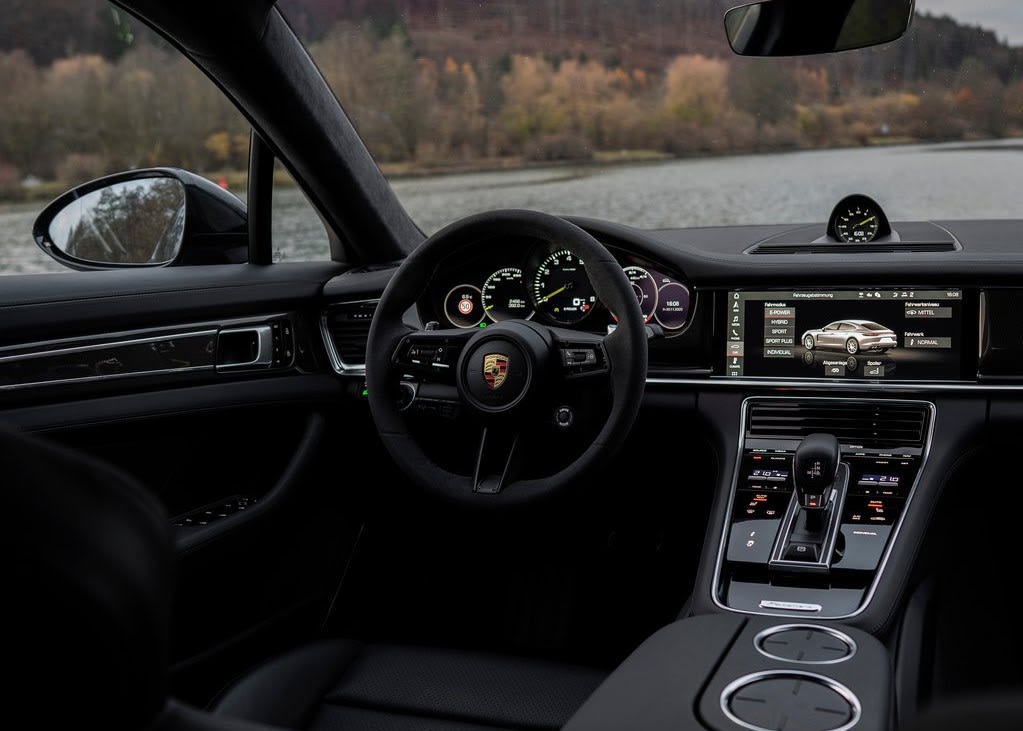
If you want to avoid the Porsche infotainment software, Apple CarPlay is included. Android Auto is, however, notable by its absence, although Porsche says it’s coming at a later date.
It’s doubtful that any other can match the perception of quality in the Porsche. Everything is just perfectly - every switch lines up, every panel is flush, every screen precisely positioned. The material qualities are top-notch, too. It’s plush, too. It might not be recognised as the height of luxury motoring but, frankly, it’s not far off.
Faults are few and far between. If we were being picky, the digital instrument panel can be slightly hidden when the steering wheel is set low, visibility out of the rear isn’t great, and the boot is a little smaller than you’d hope for. Each is, arguably, a price worth paying.
Practicality & Boot Space
A practical Porsche? To a degree, yes. Those in the front will be more than happy with their lot, with plenty of space and a pleasing amount of storage space. Phones, drinks bottles and other detritus can be slotted into a cubby hole in the middle, huge door bins, and a handful of other hiding places.
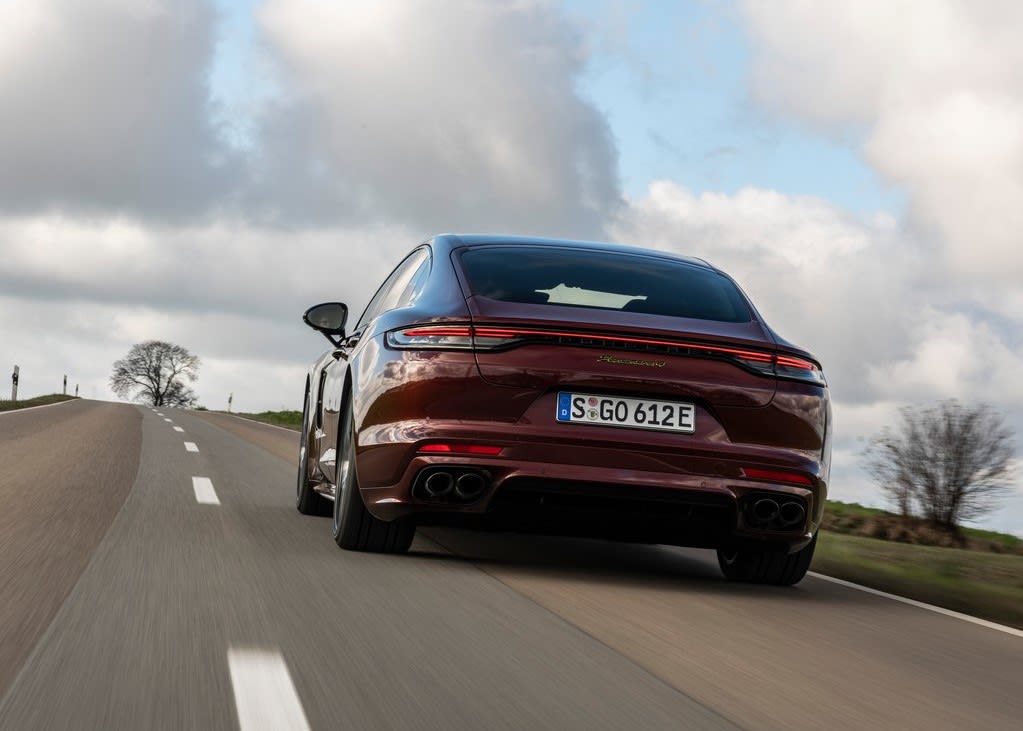
That low roofline and sleek rear screen will impact those in the rear, but not as much as you might imagine. There are only two seats, so it’s a strict four-seater, but there’s more space there than you’ll find in many of its rivals. The fact that it’s as highly appointed as the front, and just as comfortable, makes this impressively capable executive transport.
The boot is a little less impressive, taking just 405 litres of luggage. That's less than you'll find in a Honda Civic.
Safety
The Panamera doesn’t have a Euro NCAP safety rating, but don’t let that put you off. Every Porsche model tested to date, which includes the Taycan, Cayenne and Macan, have all scored a full five-star rating, and there’s no reason to doubt that won’t continue with the Panamera.
It’s a thoroughly modern offering in terms of safety systems, with lane-keeping assist now standard, joining the automatic emergency braking systems. Disappointingly, the more comprehensive semi-autonomous drive systems, including InnoDrive, as well as parking assistance systems, are optional extras.
Options
Being a sporty German four-door whose price tag can drift far into six figures, the Panamera is a technological tour de force. Get trigger-happy with the options list and yet more cool tech awaits you, albeit at a hefty price...
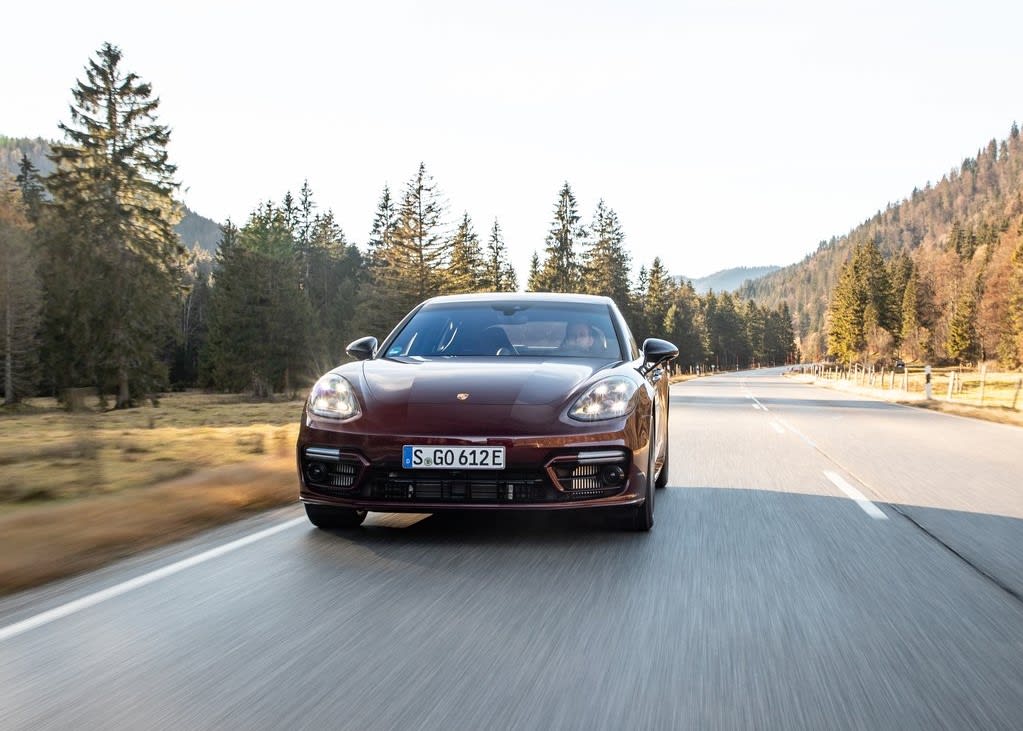
Porsche’s InnoDrive semi-autonomous adaptive cruise control is a handy upgrade for those ploughing the motorways. LED matrix lights with Dynamic Light System Plus are a nice touch too (they’re posh lights that light the way exceptionally well while avoiding blinding oncoming drivers). Park assist includes a 360-degree camera and there is also an option for head-up display. If you’re a sucker for a booming sound system then the Burmester High-End option is the one for you.
Just painting the thing can set you back over £2,000 and a nice set of wheels almost £4,000. Spectacular 18-way active sports seats clothed in Club leather add £6,500. Woof.
If you don’t pay attention, your entry-level 4 E-Hybrid could soon cost the same as the Turbo S. The most sensible option of all is to upgrade from the Panamera to the Panamera Sport Turismo. This turns the sleek hatchback into an equally sleek almost-state car, at a cost of just £2,150. Even better, thanks to better resale prices, monthly leasing costs for the more practical and more expensive model often end up being cheaper.
Rival Cars
The elephant in the room is of course the Panamera’s sibling, the Porsche Taycan. The Taycan feels like a successor to the Panamera that has accidentally been put on sale before the Panamera has left. If an EV fits into your life right now, it’s a fantastic option.
If only an internal combustion engine will do for you, the usual German suspects remain. Audi’s A7 is a masterpiece of clinical design, while the BMW 8 Series is an invigorating car to drive. The Mercedes-Benz CLS (or even the AMG GT) are arguably the best in class, but they miss out on the plug-in hybrid system that Porsche has so skillfully integrated into the Panamera.
And for many, quite understandably, nothing but a Porsche badge will do.
Verdict & Next Steps
The Porsche Panamera has always been an intriguing car, blending performance and comfort into a sizeable but still practical package. The latest model extends that with the promise of some eco-friendly technology at little extra on your monthly lease payments.
And it works. If you would rather enjoy your driving a little more than you might in a huge German saloon, then the Panamera adds that extra driving finesse that you’ll appreciate. The hybrid system works well but, like any plug-in system, you’ll need to make sure it’s right for the miles you’ll cover.
If it is right - so that means you cover less than 30 miles on most days but love a weekend blast across the country - then the Panamera PHEV is magnificent. And, as tempting as the performance figures for the Turbo S are, there’s more from less. Stick with the 4 E-Hybrid and you’ll have 90% of the fun at 50% of the cost.
Where to next?
View latest Porsche Panamera E-Hybrid leasing deals - guide price from £889.19 per month inc VAT**
Looking for a great leasing deal? Check out our incredible range of car lease deals
New luxury hatchback car? Read our latest Reviews and find the right model for you
Want to know more about leasing? Take a look at our comprehensive Leasing Guides
Interested in everything motoring? Why not catch up on all the latest Car Leasing News.
*Score based on Select’s unique meta score analysis, taking into account the UK’s top five leading independent car website reviews of the Porsche Panamera E-Hybrid
**Correct as of 15/06/2021. Based on 9 months initial payment, 5,000 miles over a 48 month lease. Initial payment equivalent to 9 monthly payments or £8002.69 Ts and Cs apply. Credit is subject to status.





















